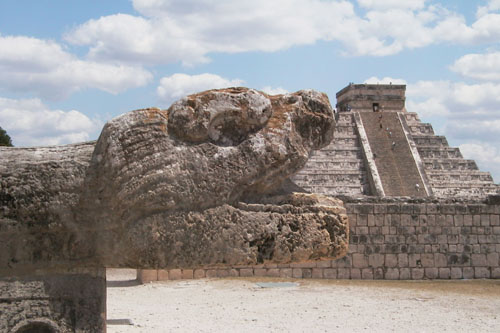
The monster is munching on the pyramid of Kukulcán.
"When the spaniards arrived to Chichén Itzá, it had been abandoned as a consecuence [sic] of the civil war fought with Mayapan. In between 1196 and 1441 the final collapse of this culture took place in the north of the peninsula."
We began the tour by dutifully following our tour guide, but Eve kept lying down on the ground to get good pictures and we soon fell far behind. We caught up to the group at the Mayan ball court, which was where the guide was describing the ancient game of Mayan basketball. The details of the game are inconsequential. The best part is, after the game, the captain of the winning team gets beheaded. It was considered an honor for their blood to be allowed to soak into the ground. If this tradition were around today, we would see a rapid decline in the salaries of our professional sports heroes.
A lot of the carvings in the ruins have death symbols, such as skulls. The Mayans were not afraid of death; it was considered to be a passing into the next stage of life.
We then ditched the tour guide and wandered off on our own, as he started to parade his pet theories on numerology and the coming destruction of the world due to a huge planet that orbited the sun in the wrong direction and came close to the earth every 666 years. If that sounds confusing, that's because it was.

The monster is munching on the pyramid of Kukulcán.
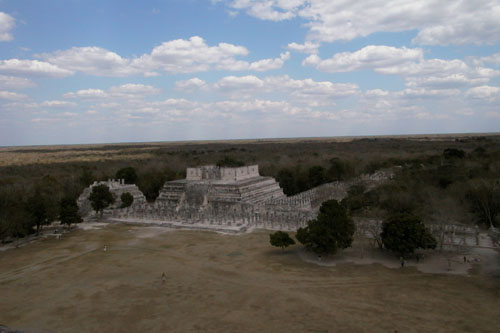
"Temple of the warriors," or "group of the thousand columns,"
as viewed from the top of the pyramid of Kukulcán.
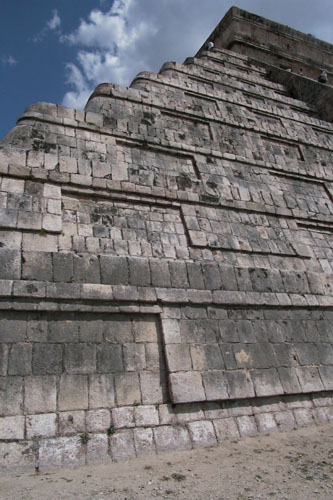
Looking up at the pyramid.
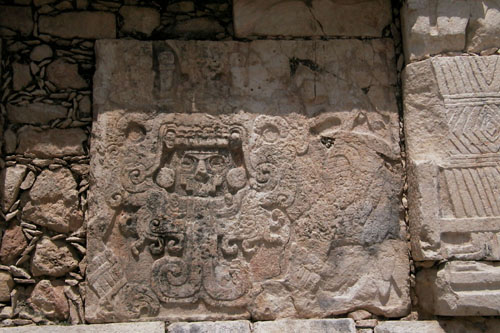
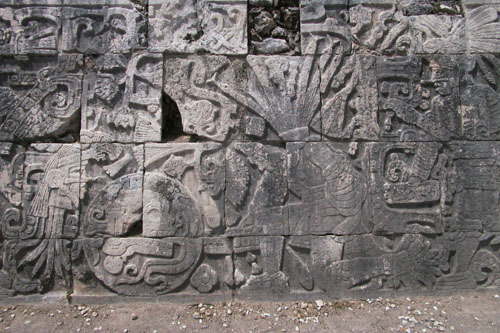
The blood spurting from the winner's neck
is turning into snakes.
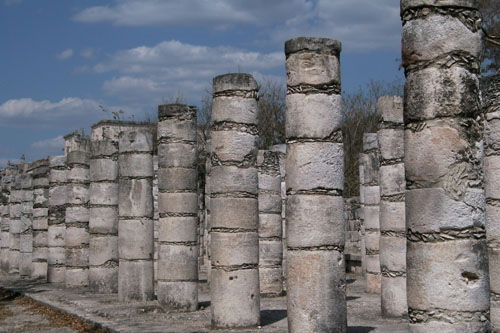
Looking down the rows of columns towards the temple of the warriors.
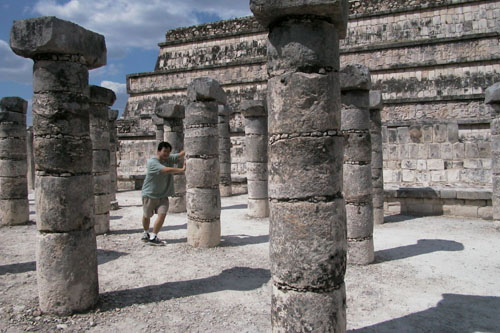
Jin attempts to play dominoes with the gods.
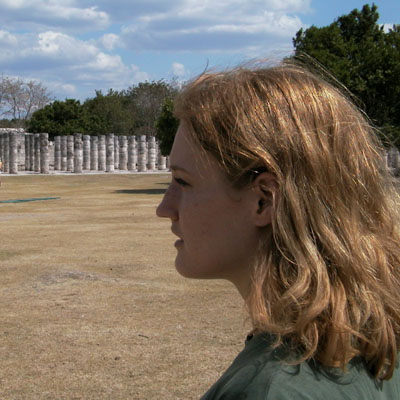
Eve stares intently at columns.
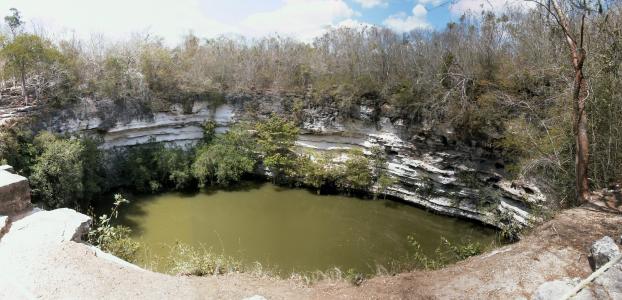
A panoramic shot of the "sacred well," or "well of the
sacrifices." This is a natural well, or "cenote."
This was taken as a series of four shots, and pasted together with some software that came with the camera.
Go to Chichén Itzá, Part II.